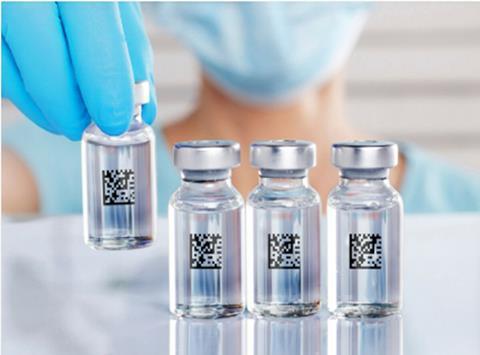
Gerresheimer, a global supplier of drug packaging solutions, offers a traceability concept that it claims will ensure complete transparency throughout the value chain and greater safety for the patient.
As the first link in the manufacturing chain, the company applies unique codes to its primary packaging and medical devices. Thanks to the digital infrastructure for traceability, all downstream parties can link, analyse, and share any data with the individual product unit.
The codes are the key to connecting previously separate worlds in the value chain, says the company. They mark the start of a new era of inter-connectivity that promises complete transparency and security for customers and patients. “Our vision includes transparency and traceability across the entire supply chain, from primary packaging to secondary packaging to filling and serialization of medicines to final use at the point-of-care,” says Lea Amstad, digital strategy lead at Gerresheimer, who is responsible for this project.
The company believes clearly marked primary packaging helps to minimise the risk of costly and dangerous mix-ups when filling medicines. This factor is becoming increasingly important due to smaller batch sizes for personalized medicine, it says.
Problems that need to be investigated during production or filling and finishing are common. The ability to trace back certain machinery events, or previously reported issues, helps with the discovery and analysis of any problems and so reduces the number of blocked products due to these ongoing investigations.
Smaller batch sizes are also making work processes more complex and require increased flexibility. Line changes can be simplified and accelerated if the batch affiliation, filling status, or other product information can be traced for each individual product through this coding.
In the event of a drug recall, the link between the unique code of the primary packaging and the serialized medicine makes it possible to draw quick and precise conclusions about the affected product units, explains Gerresheimer.
A unique code on the primary packaging that cannot be removed, along with the corresponding digital identity, is another important step on the way to a counterfeit-proof product, continues the company. Unique codes also enable a variety of use cases in marketing, customer profiling, or patient safety, allowing end customers and patients to communicate directly with the product via smartphone.
Finally, directly marked packaging can help improve product and process quality and its documentation, making it possible to address increasingly stringent regulatory requirements.
This article was created in collaboration with AIPIA (the Active and Intelligent Packaging Industry Association). Packaging Europe and AIPIA are joining forces to bring news and commentary about the active and intelligent packaging landscape to a larger audience. To learn more about this partnership, click here.

















No comments yet